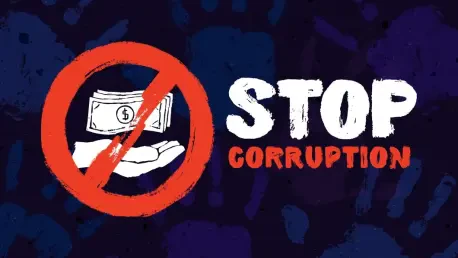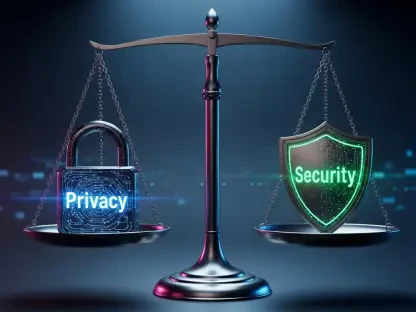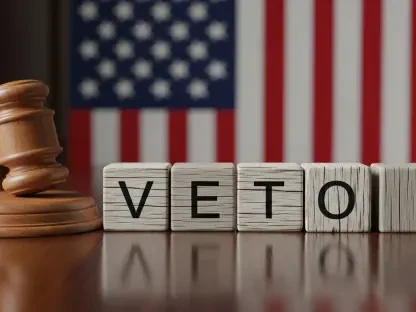Today, we’re thrilled to sit down with Desiree Sainthrope, a legal expert with deep expertise in drafting and analyzing trade agreements. With a focus on global compliance, Desiree has become a trusted voice in navigating the complex anti-corruption landscape, particularly in Southeast Asia. Her insights into regulatory challenges, intellectual property, and the impact of emerging technologies like AI make her a valuable guide for multinational corporations (MNCs) operating in dynamic markets. In this interview, we explore the evolving anti-corruption enforcement trends in Southeast Asia, the unique challenges posed by jurisdictional diversity, specific country developments, third-party risk management, and strategies for building robust compliance frameworks.
How would you characterize the current state of anti-corruption enforcement in Southeast Asia, and what makes this region stand out?
Southeast Asia is experiencing a remarkable surge in anti-corruption enforcement, driven by its position as the world’s fifth-largest economy and a hub for foreign investment. Governments across the region are under increasing pressure to align with international standards, and we’re seeing unprecedented intensity in regulatory actions. What makes this region unique is the diversity—each country has its own legal, political, and cultural framework, which shapes how anti-corruption measures are implemented. This isn’t just about passing laws; it’s about signaling to global investors that the region is a safe and transparent place to do business.
What are the primary forces pushing governments in Southeast Asia to intensify their anti-corruption efforts?
The biggest driver is economic ambition. Attracting foreign investment is a top priority, and a strong anti-corruption stance reassures investors by reducing risks of fraud or regulatory penalties. Additionally, political transitions and public demand for accountability play a huge role. High-profile enforcement actions, like Vietnam’s sweeping campaigns or Malaysia’s focus on senior political figures, show how voter pressure and global scrutiny are compelling governments to act decisively. Integration into the global marketplace also means aligning with international norms, such as those set by the OECD or the U.S. Foreign Corrupt Practices Act.
How do the legal and political differences across Southeast Asian countries impact corruption risks for businesses?
The diversity in legal and political systems creates a patchwork of risks. For instance, some countries have centralized enforcement with strict penalties, while others may have weaker institutions or inconsistent application of laws. Political stability—or the lack thereof—can also influence how corruption is addressed; in nations with frequent transitions, enforcement might be tied to political agendas. This means businesses face varying levels of scrutiny and must navigate everything from bureaucratic red tape to outright bribery risks depending on the jurisdiction.
Can you share some examples of how anti-corruption enforcement approaches differ between countries in the region?
Absolutely. Take Vietnam, where the “blazing furnace” campaign has led to thousands of party members and officials being punished—it’s a top-down, highly aggressive approach that has rattled businesses with its unpredictability. In contrast, Malaysia’s National Anti-Corruption Strategy, launched in 2024, focuses on systemic reform and aims to improve its global corruption ranking through structured policies. Then you have Thailand, where recent scandals involving local mayors highlight a more localized, case-driven enforcement style led by the National Anti-Corruption Commission. Each approach reflects distinct national priorities and capacities.
Why is it so challenging for multinational corporations to adopt a standardized compliance program across Southeast Asia?
A one-size-fits-all approach simply doesn’t work because of the region’s diversity. Legal requirements, cultural norms, and enforcement practices vary widely. For example, what’s considered an acceptable business gift in one country might be seen as a bribe in another. Without tailoring compliance programs to local contexts, MNCs risk either non-compliance with local laws or alienating partners due to cultural insensitivity. It’s a balancing act—global policies provide a foundation, but they must be adapted to address jurisdiction-specific risks and expectations.
What specific steps can companies take to customize their compliance strategies to fit the unique cultural and legal landscapes of each country?
First, they need to work closely with local counsel to understand the nuances of each market. This includes translating policies into local languages and adjusting procedures to respect cultural practices, like certain traditions or rituals. Conducting regular risk assessments is also key to identifying jurisdiction-specific challenges. Beyond that, training programs should incorporate real-world scenarios relevant to local employees and address specific legal requirements. It’s about embedding global standards while ensuring they resonate on the ground.
Why are third-party relationships often seen as a major corruption risk for MNCs in Southeast Asia, and how can this be addressed?
Third parties, such as local vendors or agents, often pose the highest risk because they may not adhere to the same compliance standards as the MNC. In markets with limited competition, these partners might engage in questionable practices to secure business, exposing the company to legal and reputational damage. To address this, companies must conduct thorough due diligence—examining ownership structures, past violations, and reputations. Ongoing monitoring and risk segmentation, where third parties are categorized by risk level, are also critical, as is including strong anti-corruption clauses in contracts.
Looking at specific developments, how is Indonesia’s roadmap for OECD accession influencing its anti-corruption standards?
Indonesia’s push for OECD accession, which started in 2024, is a game-changer. The OECD Convention explicitly criminalizes foreign bribery, so aligning with these standards means Indonesia is stepping up its anti-corruption framework to meet international expectations. This is especially significant as the largest economy in ASEAN and a G20 member. For businesses, it signals tighter enforcement and a need to ensure compliance with both local and global anti-bribery laws, as the country works to improve its standing on indices like the Corruption Perceptions Index.
How do you see the future of anti-corruption efforts unfolding in Southeast Asia over the next decade?
I believe we’ll see continued evolution, driven by domestic political priorities and international pressure. As trade ties with major economies like the U.S., EU, and Japan deepen, alignment with global standards will intensify. Technology, such as AI for monitoring compliance, could play a bigger role in detecting and preventing corruption. However, the challenge will remain in balancing enforcement with economic growth. My forecast is that while progress will be uneven across countries, the overall trajectory will be toward stricter regulations and greater transparency, making robust compliance frameworks more critical than ever for MNCs.









